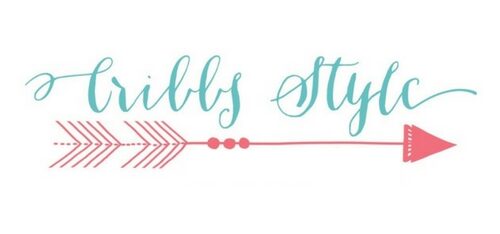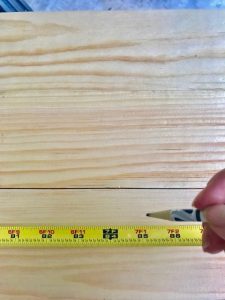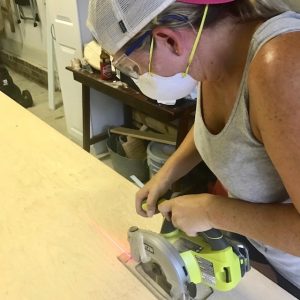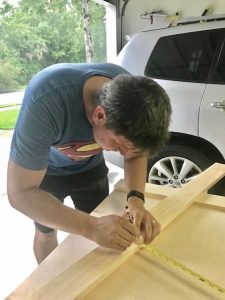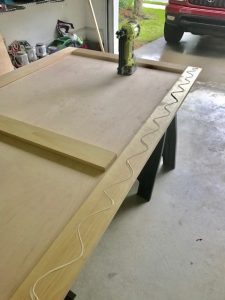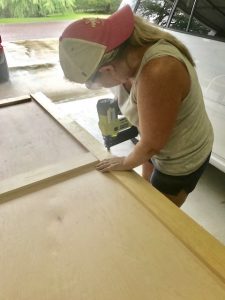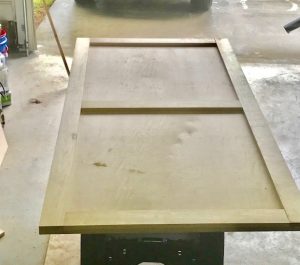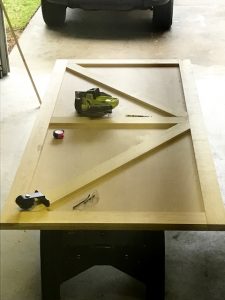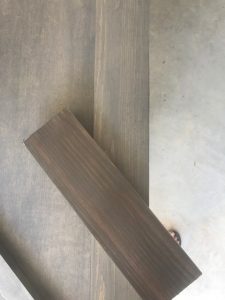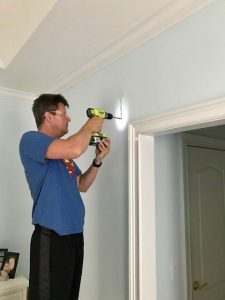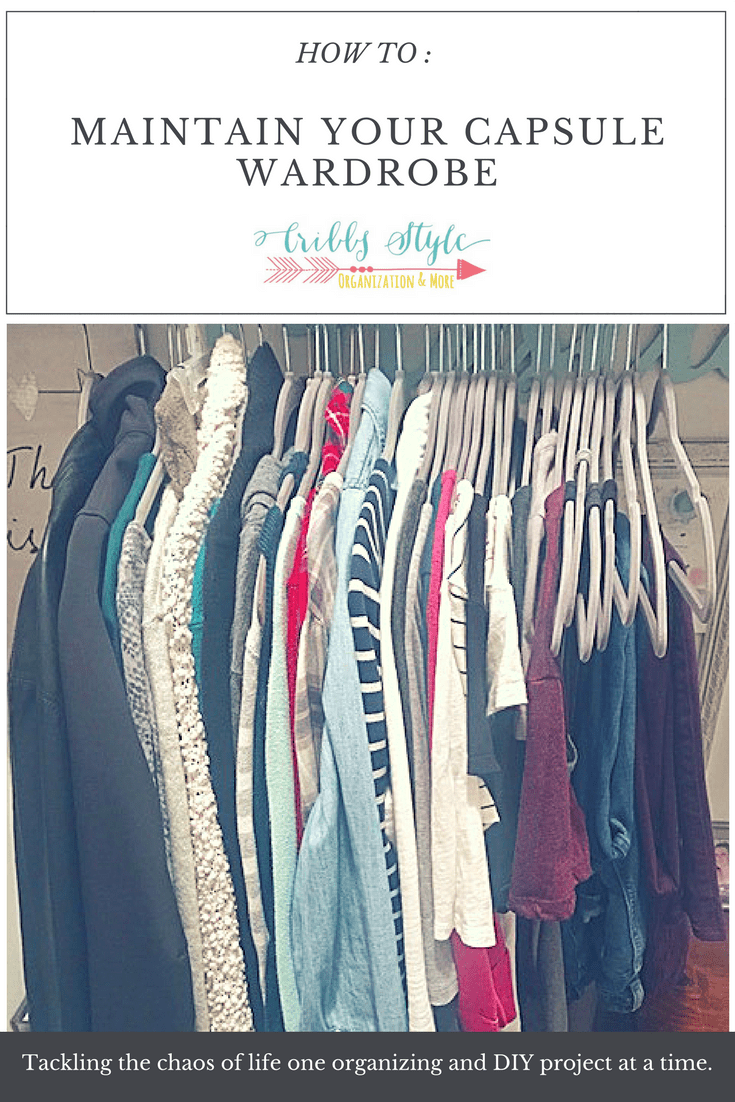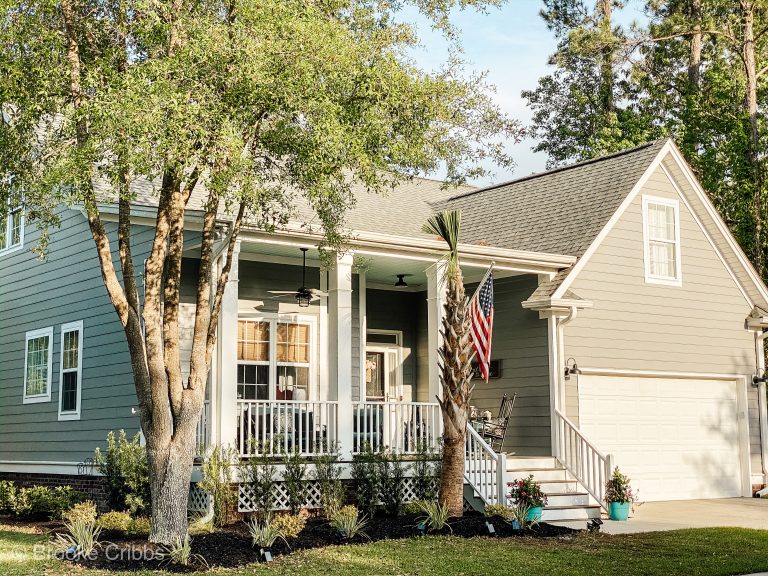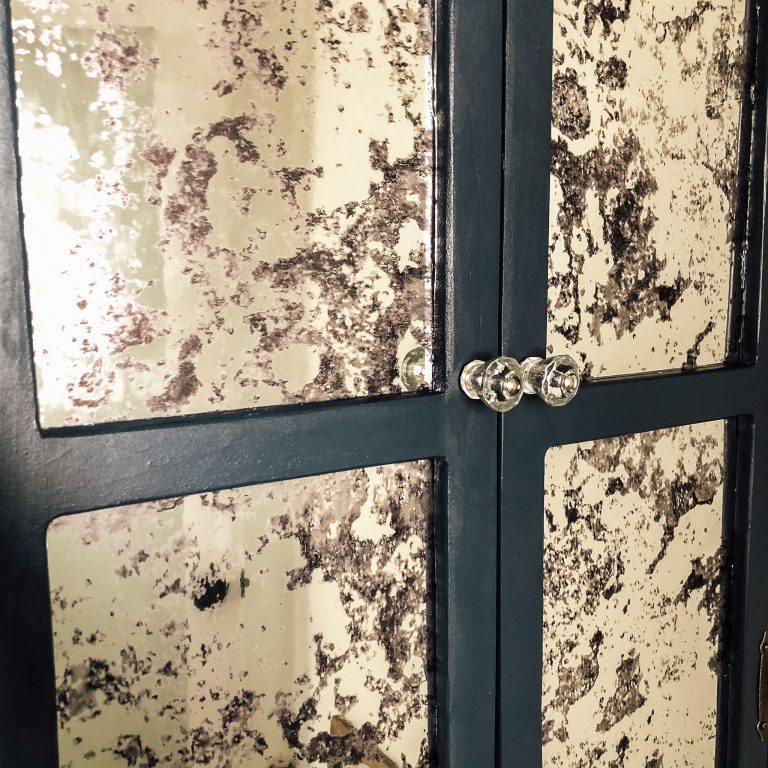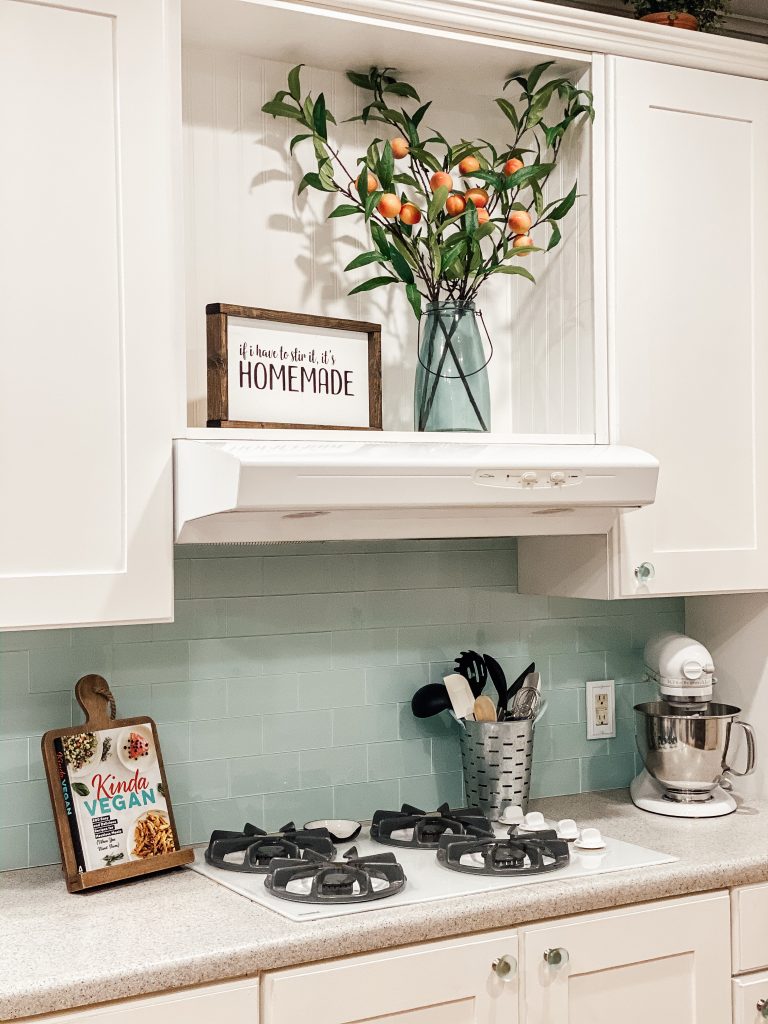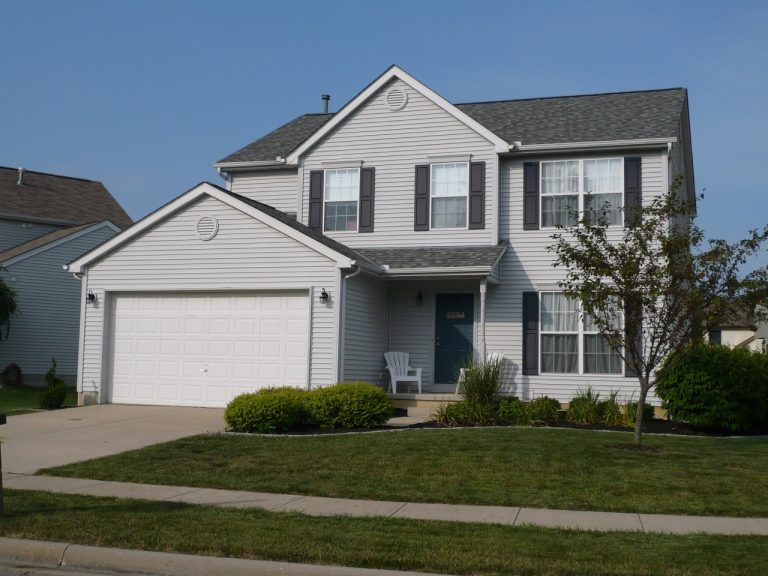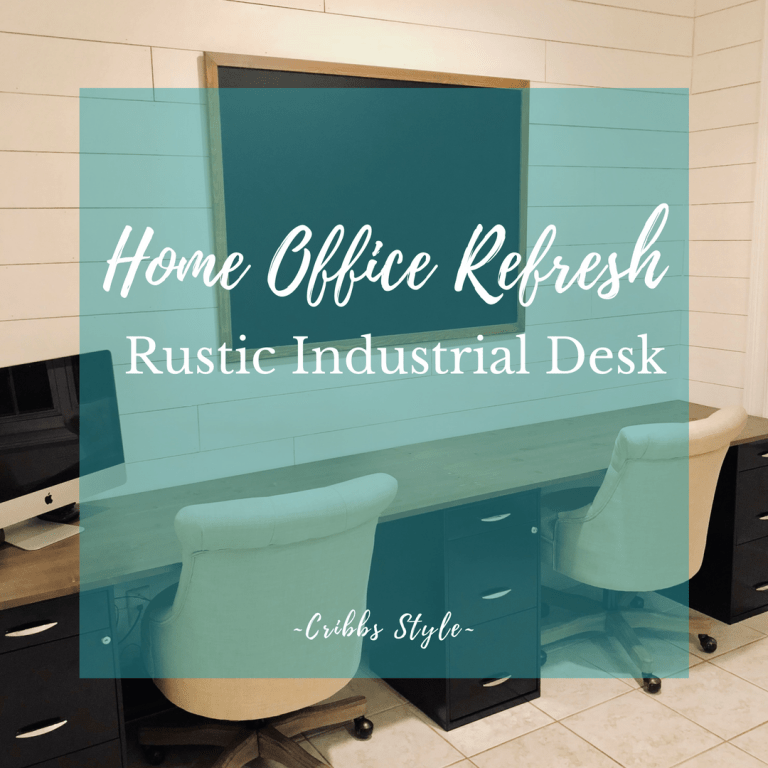How to Make a Simple Barn Door
**I received product from Everbilt through Home Depot, however the opinion is my own. This post may contain affiliate links, which cost you nothing extra, but allow me to fund more projects. **
Adding a simple barn door added a stylish touch in our master bedroom and freed up room in our bathroom!
Barn doors are all the rage in home decor and I really don’t see them going out of style any time soon. Thankfully, I was given barn door hardware from Everbilt. I was shocked at the cost of buying a premade door and decided it would be better to build one ourself. We had a little hallway that separated the master bedroom from the his and hers closets leading to the master bathroom. We wanted to open up the space in the master bathroom by removing the bathroom door, and close off the hall to the closets with a barn door so we could easily get dressed after showering.
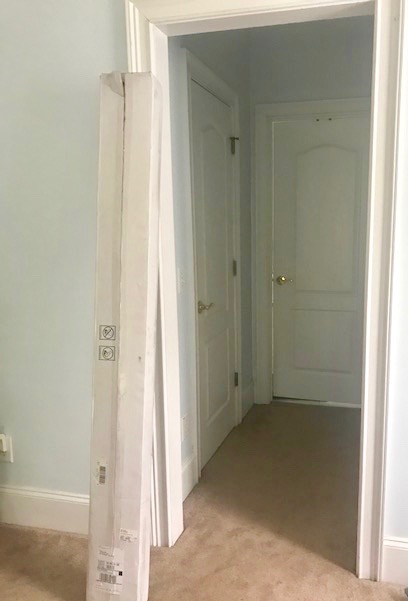
We measured the door frame and in order for the door to cover trim to trim, the barn door would need to be 40 inches wide. To allow for the proper height for the hardware and a bit of a gap at the bottom of the door, the door needed to be 84 inches tall. The instructions that came with the hardware helped with making the measuring decisions, but I will also warn, that the measurements were in metrics. Thankfully my husband, who is amazing at math, had a way to convert the metric measurements to inches. He basically saved the day because I don’t “math” well. We all have our weaknesses and I’m ok with mine. After a little debate, we settled on a design we both loved and purchased the wood from a local home improvement store.
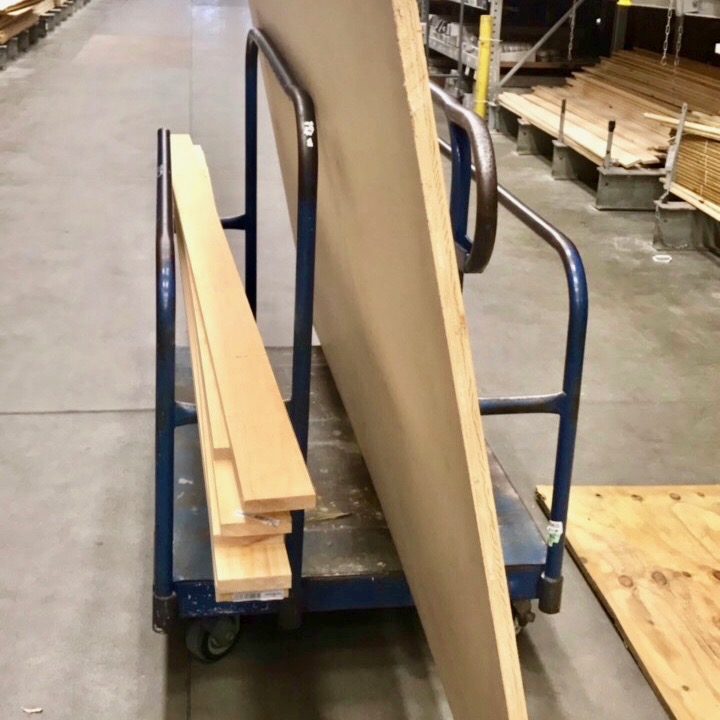
We purchased:
-One sheet of plywood
-Four 1″ x 4″ x8′ boards
-One 1″ x 4″ x 6′ board (for the header)
-Three inch wood screws
I already had on hand:
-Wood glue
-Stainable wood filler
-Wood stain (I used Rustoleum Weathered Gray and Minwax Special Walnut)
–Everbilt Barn Door Track System
The piece of plywood served as the backer for the door and we measured out the exact size of the door we needed. I then used a circular saw to cut off the excess.
Next we measured two of the 1″x4″‘s to run along both sides of the door. Then we used another 1″x4″ for the top and bottom pieces. After everything was dry fit, I added wood glue and secured them with brad nails to the plywood backer. We decided we wanted to do a simple pattern, I say it’s an arrow and hubby says its a “Z” and a backward “Z”, you get the gist. This is where things get a little tricky because we tried to match the angles as best we could and we really didn’t do too bad of a job, except we needed to buy an extra piece of 1″x 4″. So make that FIVE boards we needed instead of the original four mentioned above. Which leads to my next piece of advice, buy extra wood just in case. Even if you don’t need it now, I’m sure you’ll be able to either take it back or use on another wood project.
After everything was secured with wood glue and nails, all the nail holes and seams were covered up with stainable wood putty and set to dry. After it dried, I applied two coats of the Rust-Oleum Weathered gray on each side of the door, starting with the back first. After those two coats dried, I then went over it with the Minwax Special Walnut to really give it that weathered barn door look. Again, we let this dry and while it was drying, we returned inside to start installing the hardware.
Due to the spacing for the bolts, we knew that they would not line up with the studs, which required us to install a header board. The header board is just a piece of wood secured to the studs in the wall and the hardware is then secured to the header board. This ensured that once everything was installed, the door and hardware would be secure and not fall out of the wall. We painted the header board the same color as the wall ,which allowed it to blend in seamlessly. We used a stud finder to locate the studs and predrilled the holes through the header into the wall and attached the header with 3 inch wood screws.
As we were installing this, I started seeing red flags pop up in my head. This is where my “even though you’re not the best with math, something is mathematically wrong” sensor started going off. Remember I said that the door we built was 40 inches wide. If you saw earlier, we bought a header board that was 1″x 4″x 6′, this is because our barn door track was 72 inches long. I knew that I wanted the door to open all the way, which meant that the track needed to be at least double that of the door. And per the instructions, they recommended a slight overhang the opposite side of where the door was going to slide. This meant, that if we hung the door as is, you would only be able to walk through if you turned sideways. Houston, we have a problem.
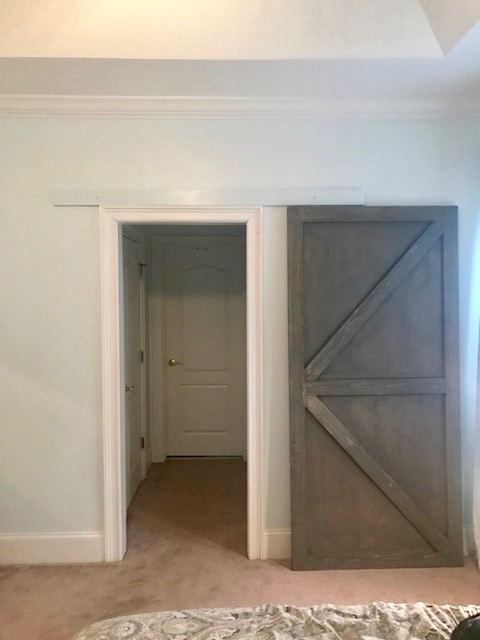
I consulted with my friends at Everbilt about our dilemma, they informed me they have extension tracks and quickly sent one out. Potential disaster averted and everything was back on track. Get it, “back on track”. (I couldn’t help myself.) This also meant that we had to buy a new header board that was 9′ long to account for the original and the extension track. We made some slight adjustments as far as where the track would be on the wall for aesthetic purposes and to our surprise, the bolts used to attach the track hit a couple of studs, but just to be safe, we still installed the header board because the door is still pretty heavy.
Overall, the barn door track was easy to install once we figured out the metric conversion and we discovered we needed a longer track based on the size of door we built. The door itself was fairly easy to build once we finally decided on the design that we liked. Thankfully, the price of the door came no where near the price of the pre-made barn door as we were able to make ours for under $100. Yes we learned a lot of things and we ran into our fair share of bumps in the road, but really it just makes us appreciate the door that much more.
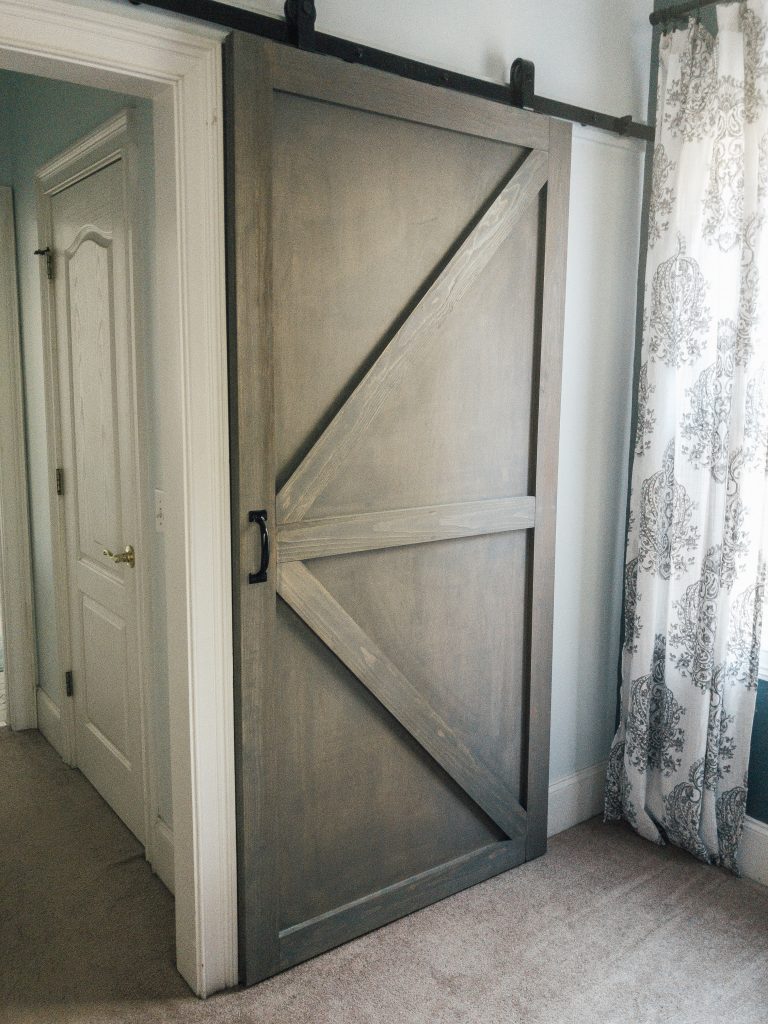
xoxo,
Brooke
Let's connect!!
Stay connected for all your DIY and organizing needs!
